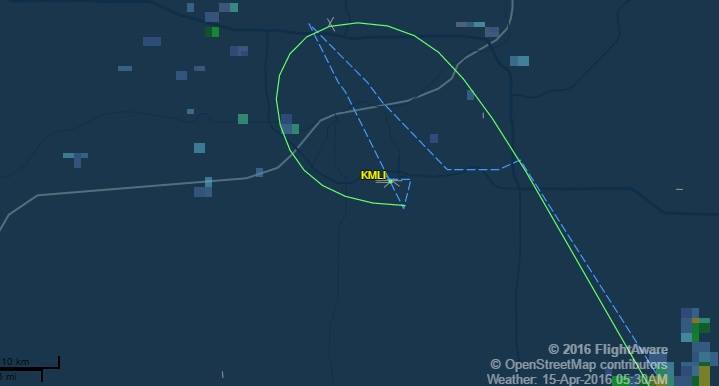The conversations between the pilot of Prince’s private jet and air traffic controllers don’t reveal much about why the jet had to make an emergency landing in Moline, Ill., just a few days before Prince died.
MPR News’ Mark Zdechlik obtained the tapes from the FAA air traffic control radar facility in Aurora, Ill., and they confirm only that the pilots declared an emergency because of an unresponsive passenger, believed now to be Prince.
But they do show the difficulty of getting a jet on the ground safely in a hurry, and the skill of pilots and controllers to accomplish the task.
The jet was traveling at 42,000 feet over Peoria at exactly 1 a.m., last Friday morning when the pilot declared an emergency. That’s a higher altitude than a commercial airliner typically flies at. It needed to lose a lot of altitude in a hurry. There was also the question of where to land.
Moline was 65 miles away. It would take some work to get the plane down quickly. At first the pilot descended at the rate of about 2,000 feet per minute, steeper than a typical passenger plane, but 12 minutes later, steepened the descent rate to almost a mile a minute. Moline’s airport was coming up in a hurry, but the jet was still too high for a stabilized approach.

A corporate pilot acquaintance, when I asked how steeply he’d feel comfortable descending his jet, suggested 5,000 feet per minute — the rate at which Prince’s plane was approaching Moline — was about as steep as he’d suggest.
The original plan was to land the plane to the east, into the wind. But it appears the plane had still not lost enough altitude to do so. It passed Moline, lost more altitude, then turned back to the airport, opposite the direction of the intended runway, then turned back toward the runway to land, a standard “pattern” for airports with no control towers. The Moline tower closes at 10 p.m.
To have attempted any other method would’ve constituted what’s known as an “unstabilized approach.”
“Unstabilized approaches are bad,” a corporate pilot who did not want to be identified said.
With no control tower, the pilot constantly reported his position on a separate frequency reserved for aircraft at the airport, in case any other planes were in the area. But there was no other traffic to worry about. The pilot landed in the opposite direction from the original plan. Other than the emergency itself, this is the only real indication of the pilot’s intent to get the plane down as quickly as possible. He landed with a tailwind.
It was 1:18 a.m. Eighteen minutes after the emergency was declared, the pilot had his plane on the ground, and was looking for help.
